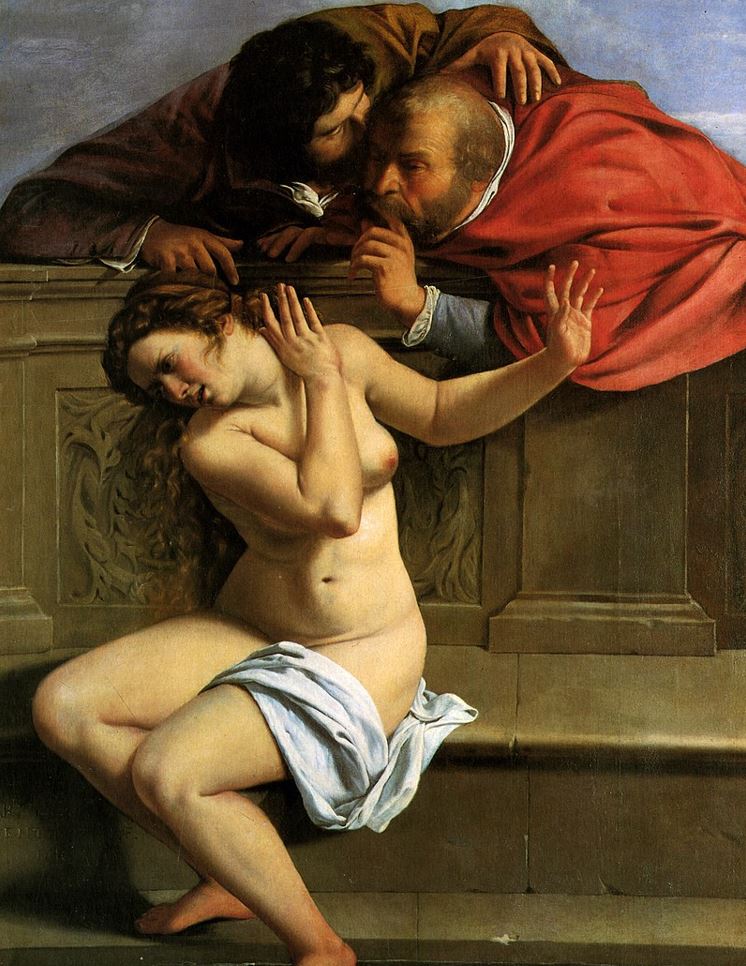The most famous Baroque artists in history developed a style that is defined by exaggerated drama and the bold use of colors, shadows, and brushstrokes. They took the ideals of the Mannerist artists, also referred to as the “Late Renaissance,” a step further.
Just like how Renaissance paintings can be compared to Renaissance buildings designed by the famous architects of the era, the exuberantly decorated Baroque buildings can be compared to the most famous Baroque paintings created during the 17th and 18th centuries.
Regardless of this notion, the Baroque era spread all across Europe and encompassed a wide variety of styles, something you’ll notice in this list.
Let’s take a closer look at some of the most famous Baroque paintings ever created so you can discover the artworks produced by the renowned artists of this fascinating era in art history.
1. Las Meninas – Diego Velázquez
- Date created: 1656
- Dimensions: 318 × 276 centimeters (125.2 × 108.7 inches)
- Locations: Museo del Prado, Madrid, Spain
Las Meninas is the ultimate masterpiece by Diego Velázquez (1599-1660), one of the most renowned Spanish artists in history. This enigmatic painting depicts the family of King Philip IV of Spain of whom Velázquez was the court painter.
What’s fascinating about this work of art is that we can also see the artist himself and probably both the king and queen in the mirror. This means that the viewer is looking at the scene from the point of view of the Spanish king who is having his portrait painted.
2. The Night Watch – Rembrandt van Rijn
- Date created: 1642
- Dimensions: 363 × 437 centimeters (142.9 × 172.0 inches)
- Locations: Rijksmuseum, Amsterdam, Netherlands
The Night Watch is the equivalent of Las Meninas in the oeuvre of Rembrandt van Rijn (1606-1669), the famous Dutch artist who lived during the Durch Golden Age. It’s a monumental artwork that depicts the local militia of Amsterdam as they were about to patrol the area.
What appears to be a scene in the middle of the night is a moment captured in the middle of the day. The remarkable use of light and shadow is known as tenebrism and the thick coat that makes it appear darker than it gives the painting its erroneous name.
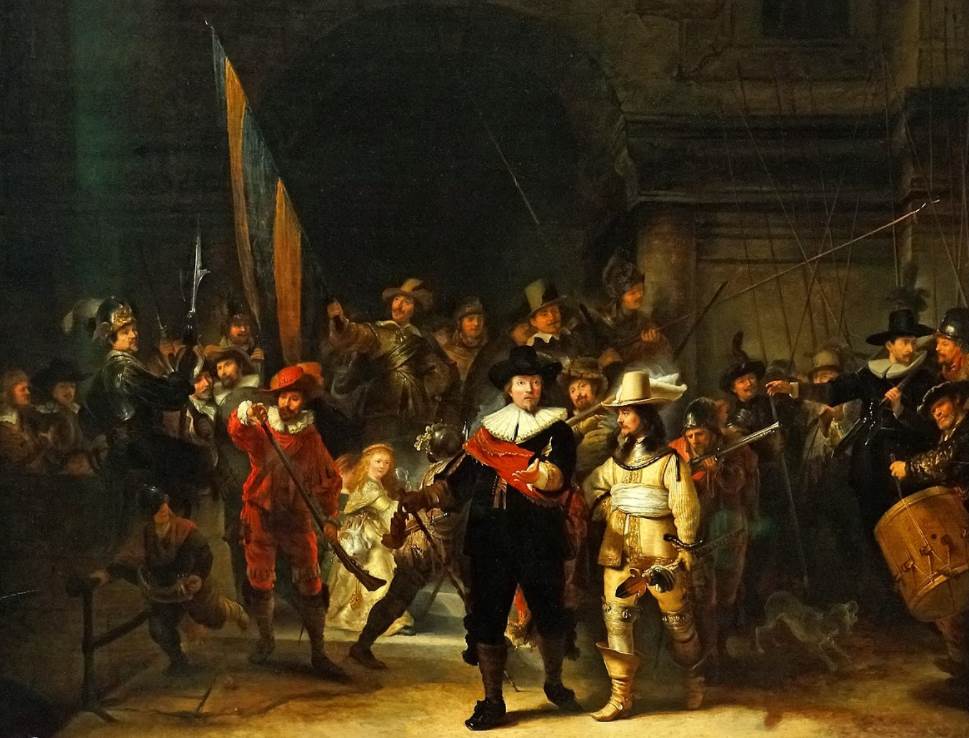
3. The Calling of Saint Matthew – Caravaggio
- Date created: 1599-1600
- Dimensions: 322 × 340 centimeters (127 × 130 inches)
- Locations: San Luigi dei Francesi, Rome, Italy
The Calling of Saint Matthew was a revolutionary painting by Caravaggio that was completed in the early 17th century. It was commissioned to decorate the Contarelli Chapel at the San Luigi dei Francesi church in Rome and is the painting that skyrocketed the career of Michelangelo Merisi (1510-1610).
The troubled Italian artist also painted The Martyrdom of Saint Matthew (1600) and The Inspiration of Saint Matthew (1602) for the chapel and these works defined the distinctive chiaroscuro technique used by the artist. His style eventually spread to other parts of Europe, especially to the Dutch Republic.
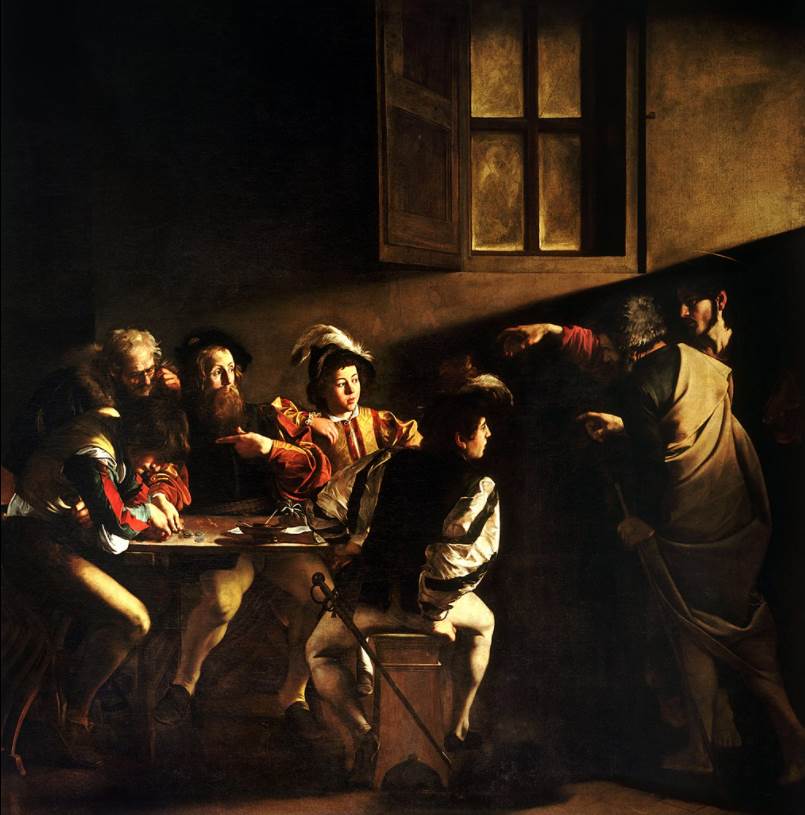
4. The Elevation of the Cross – Peter Paul Rubens
- Date created: 1610
- Dimensions: 462 × 341 centimeters (182 × 134 inches)
- Locations: Cathedral of Our Lady, Antwerp, Belgium
The Elevation of the Cross is an immense painting by Peter Paul Rubens (1577-1640) that the Flemish artist produced to decorate the Cathedral of his home city of Antwerp, modern-day Belgium. It consists of 3 panels and as the name suggests, the central panel depicts the crucifixion of Jesus Christ.
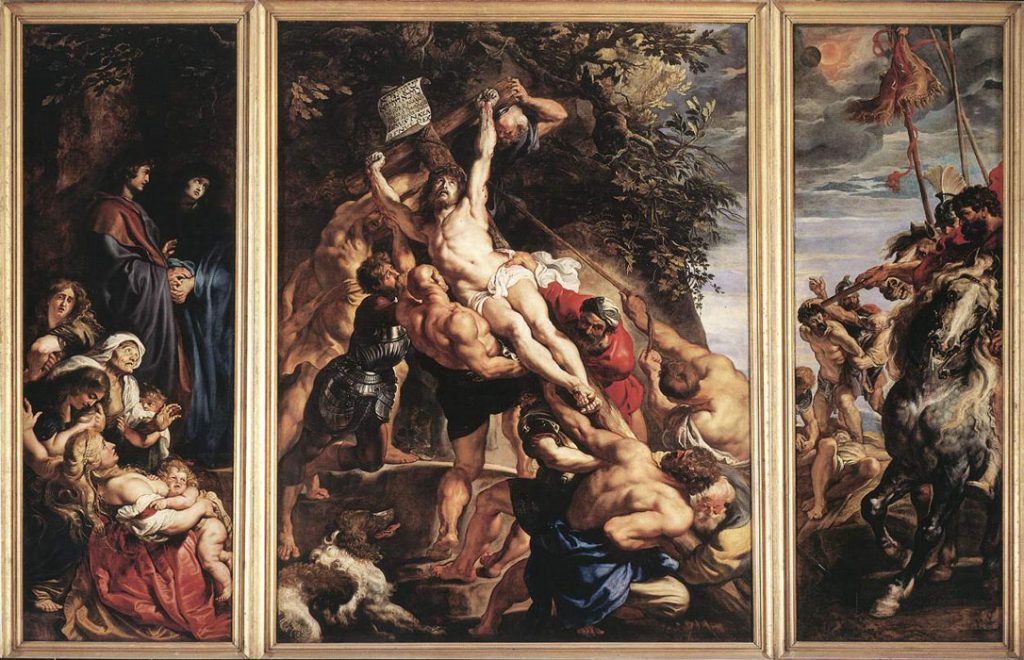
Rubens didn’t receive the commission for the painting’s current location but for the Church of St. Walburga, a church in Antwerp that has since been destroyed. The painting was brought to France during the French Revolution but returned to Antwerp in 1815.
Discover the painting in this interior tour of the Cathedral of Our Lady in Antwerp:
5. The Art of Painting – Johannes Vermeer
- Date created: 1666-1668
- Dimensions: 120 × 100 centimeters (47 × 39 inches)
- Locations: Kunsthistorisches Museum, Vienna, Austria
The Art of Painting is one of the most intriguing paintings in the oeuvre of Johannes Vermeer (1632-1675), the Dutch Golden Age painter who mainly focused on painting domestic scenes inside his own house. This painting is no different but has an important twist.
As we are looking behind a screen in the middle of the room we can see the back of Vermeer as he is painting one of his models, probably his daughter. Because of this ambiguous setting, the painting is also sometimes referred to as “The Allegory of Painting.”
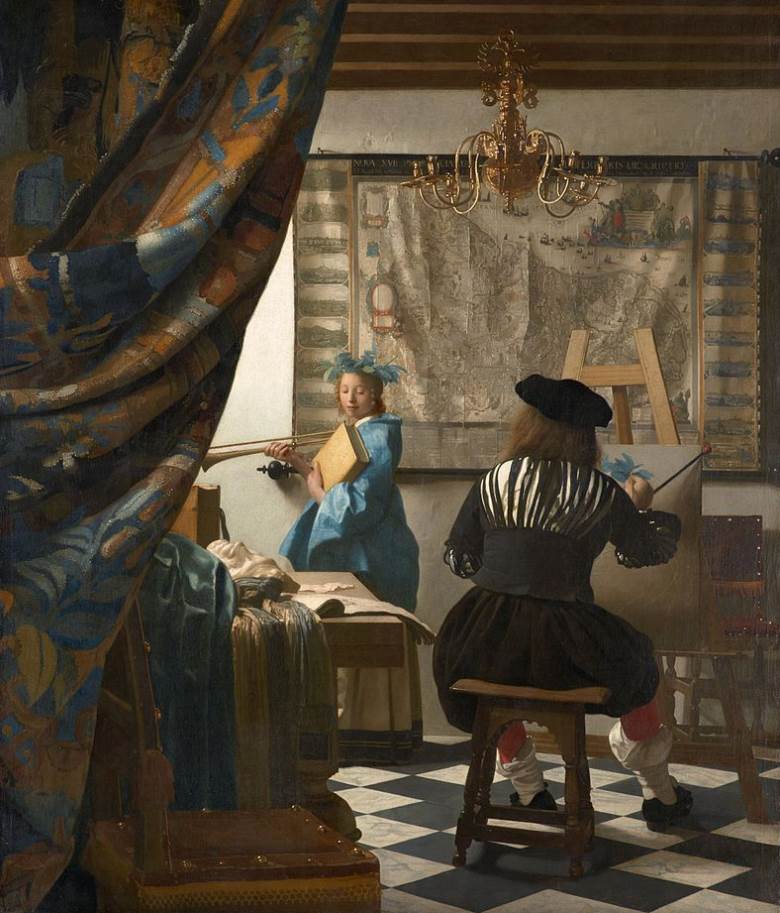
6. Charles I at the Hunt – Anthony van Dyck
- Date created: 1635
- Dimensions: 266 x 207 centimeters (104.72 x 81.49 inches)
- Locations: Louvre Museum, Paris, France
Charles I at the Hunt is one of the many portrait paintings produced by Flemish Baroque artist Anthony van Dyck while he was the English court painter. It depicts King Charles I of England (1600-1649) as he is casually standing next to his horse during the hunt while wearing aristocratic clothes.
Van Dyck had the unique ability to combine the realistic features of the people he depicted while still being in line with the type of paintings produced during the Baroque era. The artist eventually ended up being knighted for the remarkable collection of paintings he created in England.
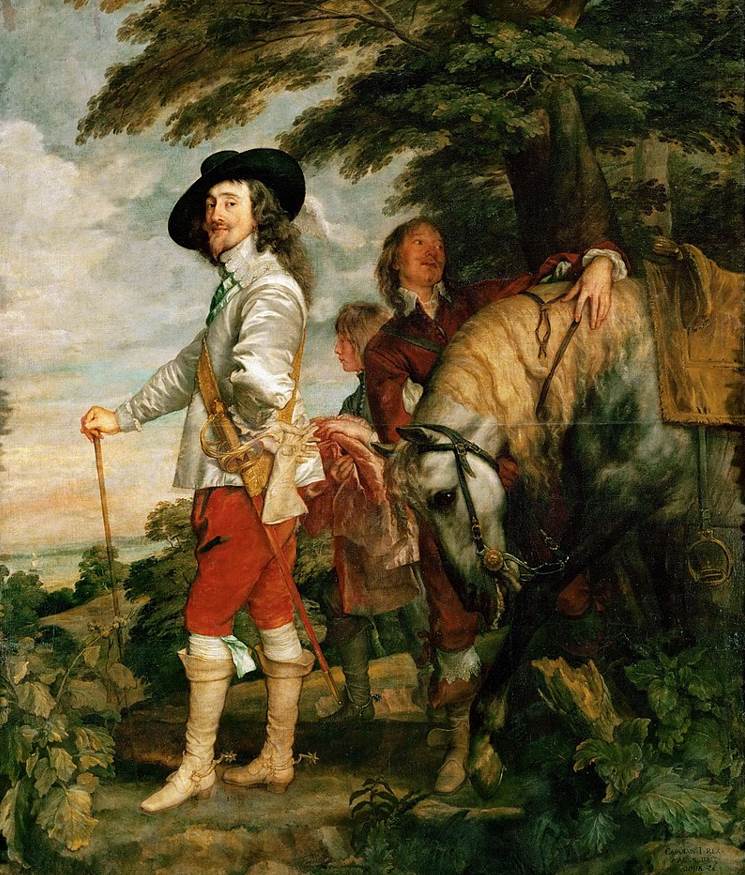
7. The Entombment of Christ – Caravaggio
- Date created: 1603-1604
- Dimensions: 300 × 203 centimeters (120 × 80 inches)
- Locations: Pinacoteca Vaticana, Vatican City
The Entombment of Christ is another painting by Caravaggio that was produced at the height of his career. It features the distinctive trademark of the artist with the use of an extreme contrast of light and shadow to exaggerate the dramatic effect.
The painting was originally commissioned to decorate the newly established church of Santa Maria in Vallicella for the Oratory of Saint Philip Neri. A copy still hangs in the chapel of this church today while the original was moved to the Vatican Museums.
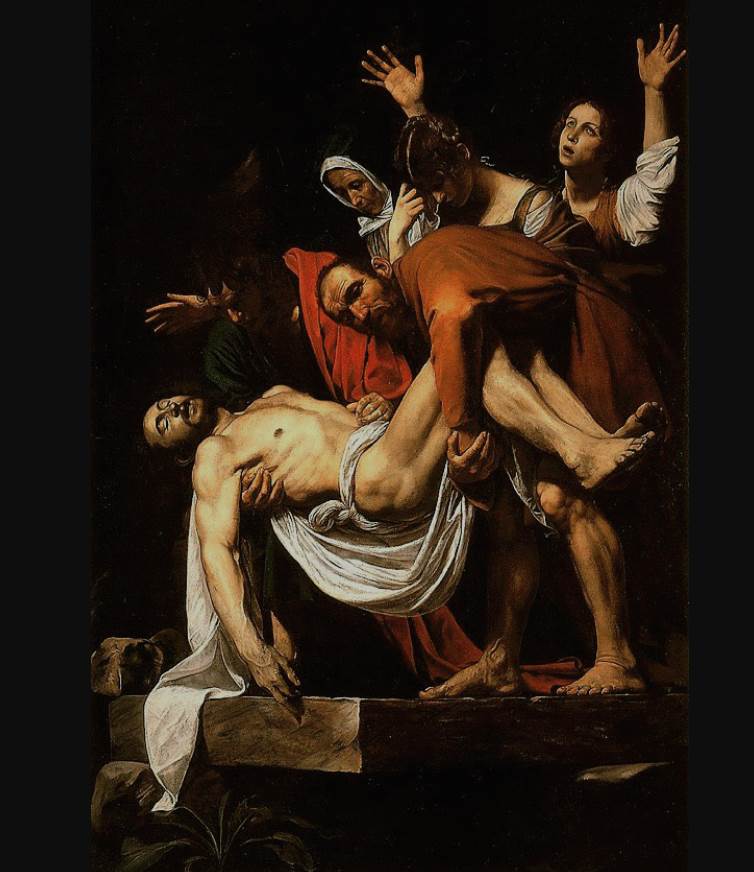
8. The Triumph of Bacchus – Diego Velázquez
- Date created: 1628-1629
- Dimensions: 165 × 225 centimeters (65 × 89 inches)
- Locations: Museo del Prado, Madrid, Spain
The Triumph of Bacchus is also known by its Spanish name “Los Borrcahos” which translates to “The Drinkers.” It’s one of the most fascinating paintings by Velázquez that was commissioned by King Philip IV of Spain because it depicts poor drunkards together with the god of wine, Bacchus.
This combination of a mythological figure together with common people was quite revolutionary in Spain at the time and was most probably influenced by the Italian paintings that were held in the collection of the Spanish king. The painting is considered to be an allegory of regular people forgetting their troubles by indulging in the grape juice offered by the god.
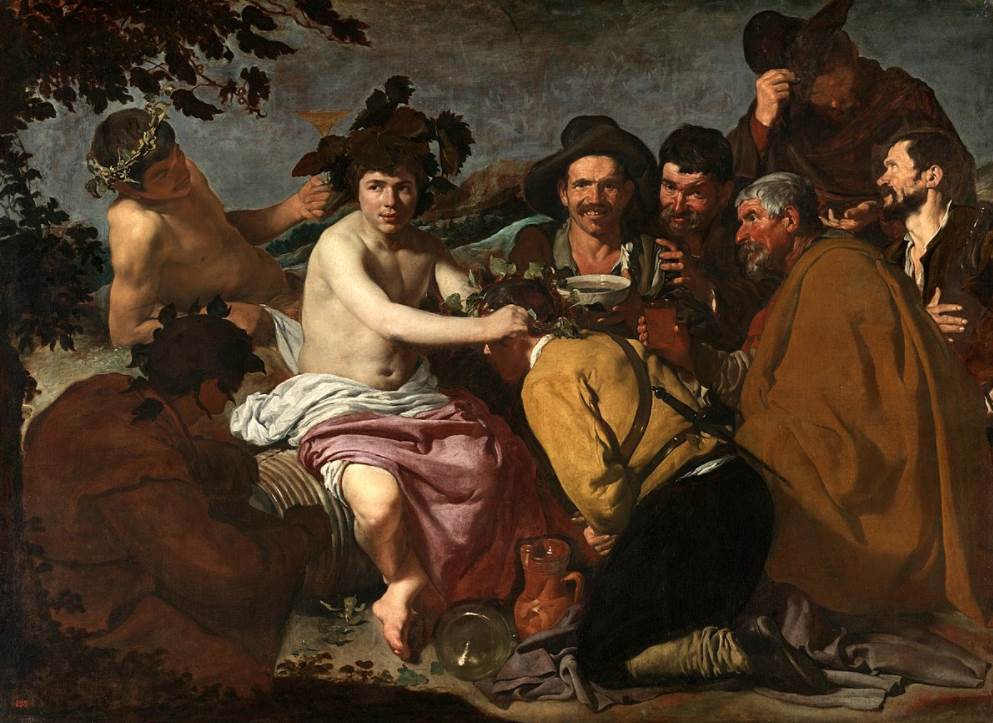
9. Samson and Delilah – Peter Paul Rubens
- Date created: 1609-1610
- Dimensions: 185 × 205 centimeters (73 × 81 inches)
- Locations: National Gallery, London, United Kingdom
Samson and Delilah is another famous work of art painted by Flemish master Peter Paul Rubens. It’s another painting with a mythological subject as we can see Samson asleep on the lap of Delilah while his hair is being cut by a young man, effectively stripping him from his strength.
Just outside the door, we can see several Philistine soldiers waiting to apprehend the Hebrew hero the moment this happens. It’s a popular story from the Old Testament which has been quite popular in the world of art as well.

10. A Dance to the Music of Time – Nicolas Poussin
- Date created: 1634-1636
- Dimensions: 82.5 × 104 centimeters (32.5 × 41 inches)
- Locations: Wallace Collection, London, United Kingdom
A Dance to the Music of Time is one of the most famous paintings in the oeuvre of Nicolas Poussin (1594-1665), the leading French artist of the Baroque era who spent most of his time in Rome. It was commissioned by Giulio Rospigliosi, a man who became Pope Clement IX in 1667.
It’s a rather complicated work of art that serves as an allegory of music and time. The old man on the right playing the lyre represents time and he accompanies 4 figures who are dancing in the central part of the painting. The figures in the sky are Aurora, the goddess of Dawn, and Apollo, the god of music and dance.
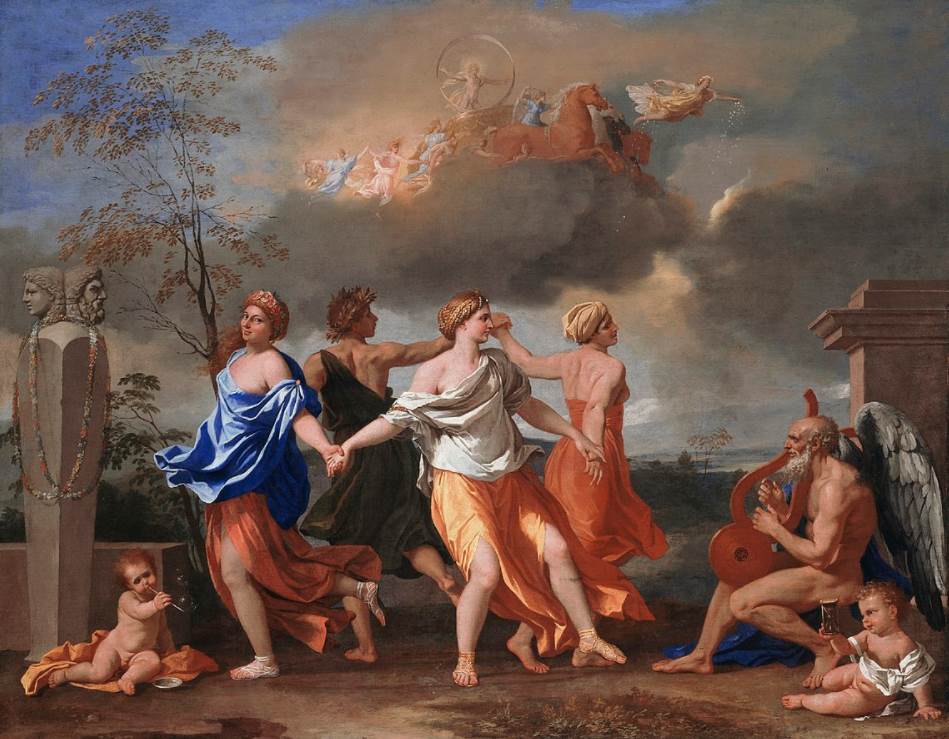
11. The Loves of the Gods – Annibale Carracci
- Date created: 1597-1608
- Dimensions: The entire vault of the Farnese Gallery
- Location: Palazzo Farnese, Rome, Italy
The Loves of the Gods is an immense fresco cycle that decorates the entire ceiling of the Farnese Gallery, the main gallery of the Palazzo Farnese in Rome. It was painted by Annibale Carracci and his workshop, a Bolognese painter who was invited to Rome based on the incredible paintings he completed in his native city.
Annibale Carracci (1560-1609) revived classical painting in Rome and this magnificent work of art was highly admired when it was completed in the early 17th century. This fresco depicts the gods in a wide variety of Earthly activities and consists of 13 narrative stories accompanied by 12 paintings that appear to be present inside a frame.
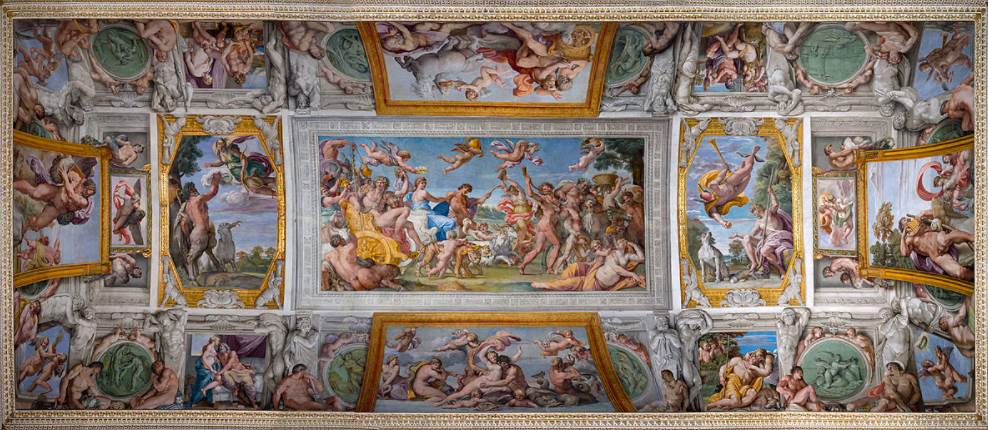
12. Susanna and the Elders – Artemisia Gentileschi
- Date created: 1610
- Dimensions: 170 × 119 centimeters (67 × 47 inches)
- Location: Schloss Weißenstein, Pommersfelden, Bavaria, Germany
Susanna and the Elders is the title of the first surviving painting by Artemisia Gentileschi (1593-1656), one of the most renowned female Baroque artists in history. She was heavily influenced by her father Orazio who was in turn influenced by the Tenebrism style developed by Caravaggio.
She was just 17 years old when she completed this masterpiece, something that explains why she became one of the most sought-after artists in Rome in the first half of the 17th century. She was one of the first artists who managed to capture the sense of distress on the face of Susanna when depicting this popular Biblical story in the history of art.
